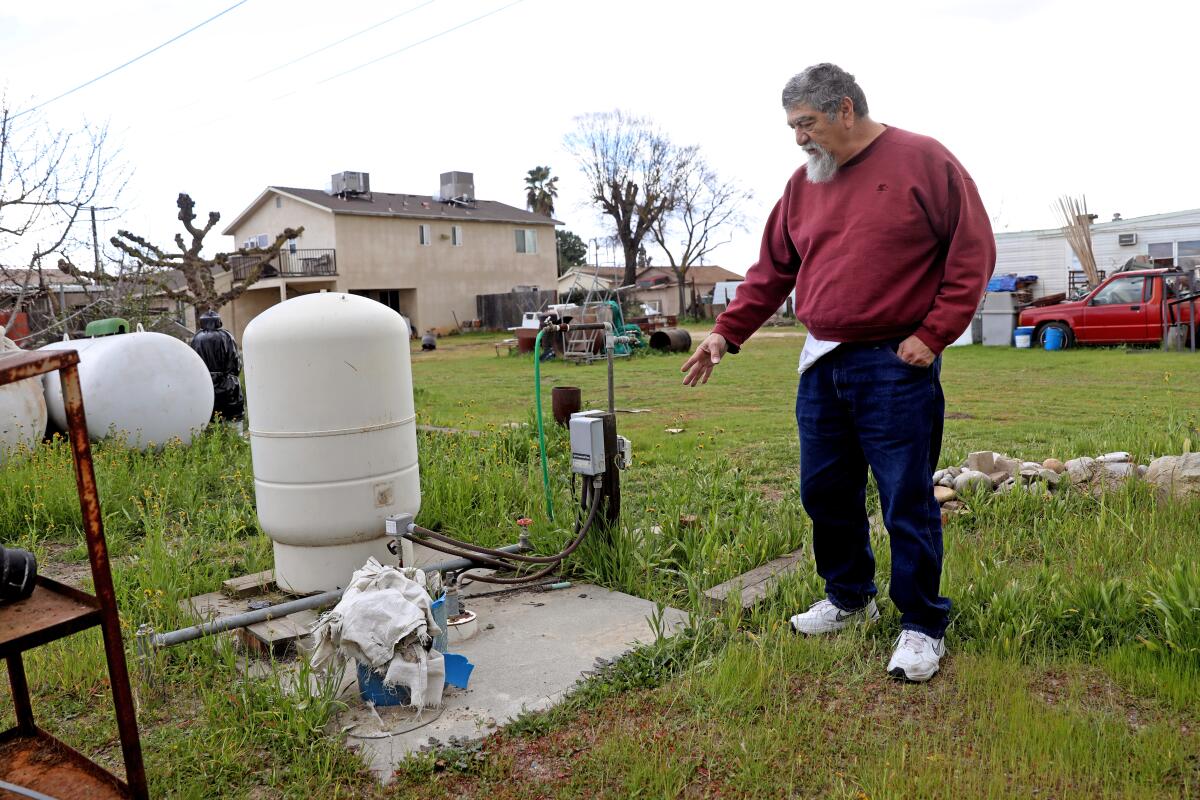California’s latest tobacco ban isn’t just cutting sales. It’s cutting funding for kids

- Share via
Good morning. It’s Wednesday, Sept. 20. Here’s what you need to know to start your day.
- Declining tobacco sales threaten First 5’s child programs
- Why are people so drawn to the happiest place on Earth?
- And here’s today’s e-newspaper
Sign up for Essential California
The most important California stories and recommendations in your inbox every morning.
You may occasionally receive promotional content from the Los Angeles Times.
California is now home to fewer smokers. But there’s a catch for children
Hi, I’m Jenny Gold, a reporter on The Times’ early childhood education team. This year marks the 25th anniversary of Proposition 10, a hefty cigarette tax that has generated billions of dollars for early childhood programs in California.
Back in 1998, voters passed — by a slim margin — a great experiment promoted by actor-director Rob Reiner: Slap cigarettes with a “sin tax” to discourage smoking, and use the revenue to fund a network of agencies to help young families. The First 5 groups were named for the first five years of life.
Over the years, about $11 billion in tobacco tax money has funded preschools, pediatric healthcare, literacy projects — and among the most successful services, maternal home care visits.
But with tobacco revenues falling fast, the agencies are now facing an existential crisis, as I reported this week.
What’s the issue?
Thanks in part to higher taxes, there are far fewer smokers in 2023 — a public health success story. But the downside is that there’s less money to distribute to programs for kids.
Funding peaked in the first year of the First 5 program and has been declining steadily since then. Now that decline is accelerating under Proposition 31, the flavored tobacco ban passed by voters last year.
Over the next two years, First 5’s revenue is expected to take a 20% nosedive and the agencies are already feeling the hit, especially those in smaller counties. Some, such as First 5 Butte County, have already started cutting services.
Bigger regions, such as First 5 LA in Los Angeles County, are slimming down their offerings, and hoping to shift some of the programs they once funded to county agencies. In the case of L.A.’s early preschool expansion, the work has largely been done. The state is in the process of creating a year of free public education for all 4-year-olds called transitional kindergarten.
But there’s a disagreement within the network of First 5s, which includes a state agency that gets 20% of the tobacco funding, and 58 agencies serving each individual county: Should they scale back further, or should they ask the state for new sources of revenue?
What programs are at stake?
Home visits are one of First 5’s most widespread and popular programs throughout the state.
First 5 LA spends $32 million on the Welcome Baby home visiting program, which served 15,000 families last year throughout the country.
A few weeks ago, I climbed into parent coach Alba Mariscal’s car, and rode along with her to visit two new mothers. We started out at a single story apartment complex in Compton, where Ilse Ochoa lives with her family. Mariscal has been visiting Ochoa for more than a year, since she was pregnant with baby Brianna.
Every few months, Mariscal stops by with diapers, toys, nursing tops and occasionally a little donated makeup. She also conducts a developmental assessment, offers breastfeeding support and teaches parents about the importance of safe sleep.
“These moms are overwhelmed, tired, sleep deprived,” Mariscal said. “Having someone come to them in the comfort of their own home is a game-changer.”
What will become of First 5s?
Several county agencies I spoke with said their home visiting programs would be the last services to go.
Unless new revenue sources are found, some of the smaller First 5 agencies may close up shop. But First 5 is unlikely to disappear entirely. One possible direction is transitioning programs to a policy role, lobbying the state to invest more and scale up the most successful First 5 programs.
“What we know about tobacco is that it’s addictive,” said Jackie Thu-Huong Wong, executive director of First 5 California, the statewide agency. “I hate to sound so dark. But I don’t foresee a future without First 5.”
You can read more about the challenges facing First 5 here.
Today’s top stories

Climate and environment
- Researchers examined plans for managing groundwater in the Central Valley. They found local plans leave thousands of wells at risk of running dry.
- California regulators have ordered the company that sells Arrowhead bottled water to stop taking much of the water it pipes from a national forest.
Political stories
- Former Compton City Councilman Isaac Galvan was indicted on suspicion of offering bribes.
- Why the U.S. is racing toward a government shutdown.
More big stories
- A high-ranking official in the Los Angeles Police Department, Al Labrada, was placed on administrative leave Tuesday after allegations of stalking, Chief Michel Moore said.
- Bijou Phillips files for divorce from Danny Masterson following his 30-year prison sentence for rape.
- A bus of asylum seekers from Venezuela and El Salvador arrives in L.A., marking the 14th sent by Texas.
- International tourism to L.A. still lags behind the pre-COVID era. There’s a push to court more visitors.
- The deaths of two models found in downtown L.A. in the same week appear to be unrelated, the LAPD says.
- The Times is exploring immigrant stories in America. Here’s what we’ve learned so far.
- Tim Ballard, whose life inspired “Sound of Freedom,” denies allegations of sexual misconduct that led him to exit a watchdog group. He blames “evil pedophiles.”
- Walt Disney Co. plans to nearly double investment in its parks and resorts segment to $60 billion over the next 10 years.
- Los Angeles hosts events celebrating the independence days of Mexico and many Central American countries.
- Shohei Ohtani has elbow procedure and expects to play next year and pitch in 2025.
- Can the Dodgers’ new-look culture carry them for the postseason run?
Get unlimited access to the Los Angeles Times. Subscribe here.
Commentary and opinions
- Erika D. Smith: Why RV encampments might finally start disappearing in L.A.
- Robin Abcarian: Will Lauren Boebert and other female politicians pay the price for behaving badly?
- LZ Granderson: Are we surprised that a book about the greats of rock music excluded all women and Black people? The real question is how white male stars will respond.
- Editorial: A nominee to the L.A. Ethics Commission raises, well, ethical questions.
Today’s great reads
Column: Thanks to Drew Barrymore, striking writers are in their most powerful position yet. In just seven days, Barrymore highlighted the new rules and high stakes of this year’s 4½-month-long writers’ strike — and wound up handing the WGA a very powerful weapon just in time for what one hopes will be a near-final round of talks with the Alliance of Motion Picture and Television Producers, which represents the studios, this week.
“The guild should be sending her flowers and some very nice fruit baskets,” The Times’ Mary McNamara writes.
Other great reads
- An alleged Napa trespasser stabs a homeowner. The homeowner uses his knife to stab him back.
- Horrific dam collapses epitomize Libya’s failures. Why were so many warnings ignored?
How can we make this newsletter more useful? Send comments to essentialcalifornia@latimes.com.
For your downtime
Going out
- 🎡 The scientific reason why you can’t stop going to Disneyland.
- 🎭 ‘Every Brilliant Thing’ at the Geffen Playhouse counts the joys that make life livable.
- 📲 Use social media to become an influencer in your field. Here’s how to do it.
Staying in
- ⚾ Angels-Rays in MLB’s virtual ballpark? How baseball in the metaverse works.
- 📚 TV’s top shows are on hold as strikes wear on. These 10 books are replacement therapy.
- 🥘 Here’s a recipe for braised minced pork belly.
- ✏️ Get our free daily crossword puzzle, sudoku, word search and arcade games.
And finally ... a great photo
Show us your favorite place in California! Send us photos you have taken of spots in California that are special — natural or human-made — and tell us why they’re important to you.

Today’s great photo is from Genie Davis of Redondo Beach: The Bendix neon sign in Downtown L.A. Genie writes:
Built in 1929 for Bendix aerospace, the distinctive neon sign on the roof was originally designed to guide planes around it. Today the building holds art studios, small galleries, and designers. Rooftop views — when opened for events — show off all the jeweled city lights below and the still shining red Bendix sign towering above.
Have a great day, from the Essential California team
Elvia Limón, multiplatform editor
Kevinisha Walker, multiplatform editor
Laura Blasey, assistant editor
Check our top stories, topics and the latest articles on latimes.com.
Sign up for Essential California
The most important California stories and recommendations in your inbox every morning.
You may occasionally receive promotional content from the Los Angeles Times.









